Both Hoi An and Hue cities are in the middle of Vietnam, and they’re not far from each other (about 130 km). Therefore, for those who travel from north to south or vice versa with a limited visa validity, they want to know which is better to visit.
Located on the left bank of the Thu Bon river, Hoi An is a small historical port town. If fly, travelers need a 45-minutes drive to get it from Da Nang. Here, foreign tourists love strolling to see lovely old quarters, go shopping, try local foods and photograph. At night, thousands of lanterns just give Hoi An a spectacular beauty.
As the capital of Vietnam from 1802 to 1945, Hue city boasts of grand monuments built by emperors, set along the Perfume river. Besides the Royal palace, travelers always add Buddhist temples and mausoleums in their itinerary. This charming city is also nationally known for its amazing local cuisine.
In this article, we introduce Hue and Hoi An cities, things to see, things to do and other sides about them. Depending on personal preferences, you can decide which is better on your own (or even visit both).
Read also:
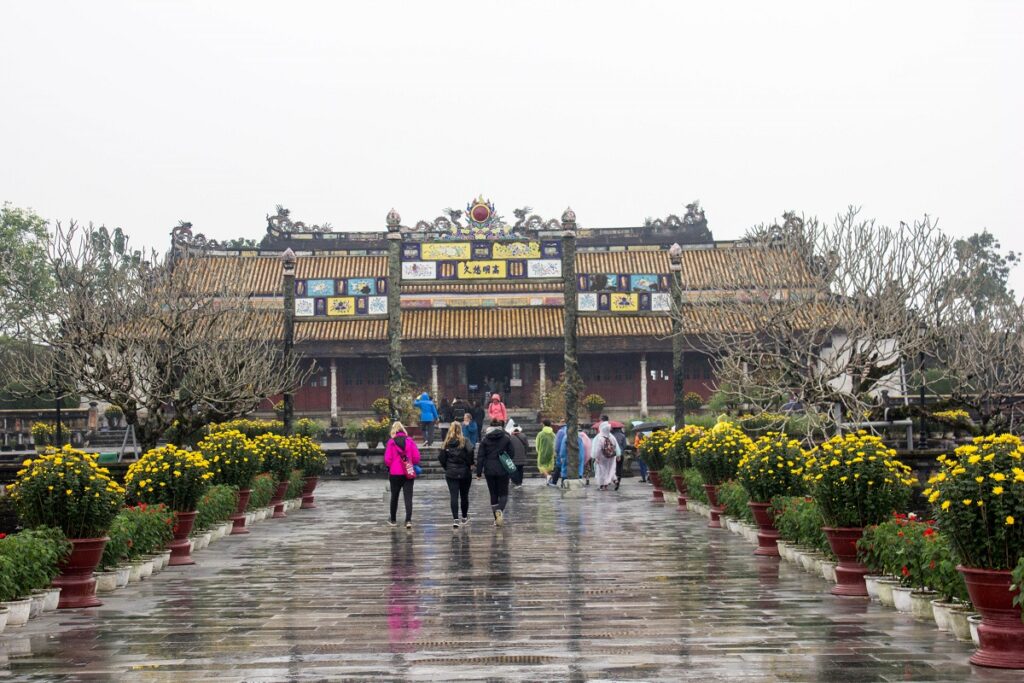
Table of content
- 1 Hoi An Introduction
- 2 Hue City Introduction
- 3 What to See in Hoi An vs Hue?
- 4 What to Do in Hoi An and Hue?
- 5 Hoi An or Hue: Which is Better for Foodies?
- 6 Hoi An or Hue: Which is Better for Nightlife?
- 7 How to Visit Both Hoi An and Hue
- 8 How Many Days in Hoi An and Hue?
- 9 Related Posts
- 10 Bach Ma National Park: Hiking, Trekking in Da Nang and Hoi An
- 11 Hoi An Wet Season: What to Do in Hoi An When It Rains?
- 12 Thanh Ha Terracotta Park
- 13 Vinwonders Nam Hoi An Theme Park (formerly Vinpearl Nam Hoi An)
- 14 Am Phu Cave Complete Travel Guide
- 15 Hoi An or Hue: Which is Better?
- 16 The Official Hoi An Travel Guide (MUST READ)
- 17 The Hoi An Market (Hoi An Central Market) Complete Guide
- 18 Hoi An Memories Show: The Best of Hoi An Impression Theme Park
- 19 Hoi An Bridge: Famous Bridges in Hoi An
- 20 How to Get From Hoi An to My Son Sanctuary
- 21 Hoi An’s Chinese Assembly Halls and Chinese Temples
- 22 Hoi An Walking Tours: Heritage, Foods, Photography & Locals
- 23 Hoi An Self Guided Walking Tour (Hoi An By Yourself)
- 24 How to Visit Golden Bridge Vietnam
- 25 Unique Experiences in Hoi An and Why?
- 26 An Bang Beach: A Guide to Hoi An’s Best Beach
- 27 Experiences in Hoi An: Get Insight Into Hoi An’s Local Culture
- 28 Things to Do in Ba Na Hills Besides Golden Bridge
- 29 Hoi An Nightlife: What to Do in Hoi An At Night?
- 30 Hoi An Countryside: Villages, Rice Fields & Tours
- 31 How to Get to Golden Bridge From Hoi An
- 32 Hoi An Entrance Fee: Old Town, Golden Bridge, My Son, More
- 33 Hoi An Airport: Everything You Need to Know
- 34 Hoi An Lantern Boat Ride on Hoai River
- 35 Hoi An Private Car and Driver
- 36 What to Do in Hoi An Ancient Town
- 37 Da Nang and Hoi An Itinerary for Visitors Staying Overnight in Hoi An
- 38 Hoi An 3 Day Itinerary: A Travel Plan for 3 Days in Hoi An
- 39 Hoi An Free Things to Do: Budget Travel in Hoi An Vietnam
- 40 Hoi An One Day Itinerary: A Travel Plan for One Day in Hoi An
- 41 Hoi An Half-Day Tours: Guide to Half Day Trips From Hoi An
- 42 Hoi An Day Tours: A Guide to Best Day Trips From Hoi An
- 43 Hoi An Beach: A Guide to All Beaches in Hoi An Vietnam
- 44 Hoi An Food Specialties
- 45 How to Get From Hoi An to Da Nang
- 46 Hoi An Cheap Things to Do: All Solo Travelers Need to Know
- 47 Hoi An Best Things To Do: Recommendations from Local Experts
- 48 Hoi An Things to Do: All What Can You Do in Hoi An Vietnam
- 49 Hoi An Things Not to Miss: A Guide to Must Do in Hoi An
- 50 Hoi An or Da Nang: Which is Better?
- 51 Hoi An Pottery Village: A Guide to Thanh Ha Pottery Village
- 52 Hoi An Ancient Town Tour
- 53 Hoi An Old Town Ticket: Price, Sellers, Included Sites, More
- 54 My Son Sanctuary Tour
- 55 Hoi An Lanterns: Festival, Making Class, Where to Buy, More
- 56 Hoi An Best Area to Stay: Guide to Where to Stay in Hoi An
- 57 Hoi An Weather by Month: Guide to Hoi An Monthly Weather
- 58 Hoi An River Cruise: Guide to The Best Boat Tour in Hoi An
- 59 Hoi An Old Town Boats: Guide to Boat Rides in Hoi An Town
- 60 Hoi An 2 Day Itinerary: Traveler Guide to 2 Days in Hoi An
- 61 Cham Island Hoi An
- 62 Hoi An Basket Boat Ride
- 63 Hoi An Coconut Village: A Guide to Cam Thanh Coconut Village
- 64 Hoi An Cham Temples: My Son Sanctuary & Quang Nam Temples
- 65 How to Get from Da Nang Airport to Hoi An
- 66 Da Nang to Hoi An: Best Da Nang Airport Transfer and More
- 67 Hoi An Tour Guide: How to Find a Private Tour Guide in Hoi An
- 68 Hoi An Ancient Town Attractions
- 69 Hoi An Old Town Map
- 70 Tra Que Vegetable Village
- 71 Hoi An Lantern Festival
- 72 Hoi An Night Market: A Thing to Do in Hoi An at Night
- 73 My Son Sanctuary Travel Guide
- 74 Hoi An Old Town Unesco World Heritage – Hoi An Travel Guide
- 75 Featured Tours and Experiences
- 75.0.1 Golden Bridge and Ba Na Hills Night Tour
- 75.0.2 Golden Hands Bridge Tour In Sunrise or Sunset (1/2 Day)
- 75.0.3 Cam Kim Island Bicycle Tour From Hoi An
- 75.0.4 Cham Island Tour From Hoi An (Group Tour)
- 75.0.5 Cham Island Tour From Da Nang (Group Tour)
- 75.0.6 Hoi An Vegetarian Food Tour
- 75.0.7 Hoi An Evening Walking Food Tour Through Laneways
- 75.0.8 Private Hoi An Basket Boat Tour (Shuttle Bus, Bicycle, Bike)
- 75.0.9 Half-day Am Phu Cave Tour (Private)
- 75.0.10 Hoi An Countryside Tour (Bicycle, Car, Electric Shuttle)
- 75.0.11 Da Nang Tour Package From Singapore
- 75.0.12 Hoi An Evening Tour From Da Nang with Lantern Boat Ride
- 75.0.13 Hoi An Walking Food Tour Through Laneways
- 75.0.14 My Son Sanctuary and Hoi An Old Town Tour with Thu Bon River Cruise
- 75.0.15 My Son Day Trip From Hoi An including Marble Mountains and Basket Boat
- 75.0.16 Half Day Hoi An City Tour With River Cruise
- 75.0.17 Son Tra Peninsula Tour with Marble Mountains (Private/Small Group)
- 75.0.18 Hue Day Trip From Hoi An with Hai Van Pass, River Cruise & Lunch
- 75.0.19 Hoi An Ancient Town and Countryside Tour (Bests of Hoi An Tour)
- 75.0.20 Hoi An Tour From Da Nang Airport (Private, Optional Lunch)
- 75.0.21 Hoi An Day Trip From Da Nang (Marble Mountains, Basket Boat, Old Town)
- 75.0.22 Da Nang City Tour From Airport (Private, Optional Lunch)
- 75.0.23 Hoi An City Tour with Lantern Class, Lantern Boat, Night Market & Local Food Sampling
- 75.0.24 Marble Mountains, Basket Boat Ride & Hoi An Old Town Walking Tour
- 75.0.25 Marble Mountains & Golden Bridge/Ba Na Hills Day Tour
- 75.0.26 Marble Mountains & Monkey Mountain Tour (Half-day, Private)
- 75.0.27 Private Golden Bridge Sunrise Tour (Half-day, Optional Lunch)
- 75.0.28 Hoi An Ancient Town & Golden Bridge Day Tour (Private/Small Group)
- 75.0.29 My Son Sanctuary & Golden Bridge/Ba Na Hills Day Tour
- 75.0.30 Private My Son Sanctuary Sunrise or Sunset Tour
- 75.0.31 Full Day Hoi An Ancient Town & Countryside Experience With Local
- 75.0.32 Full Day My Son Sanctuary & Hoi An Countryside Tour With Local
- 75.0.33 Full Day Hoi An Ancient Town & Coconut Village Experience
- 75.0.34 Son Tra Peninsula, Marble Mountains and Hoi An City Tour
- 75.0.35 Half-day Marble Mountains Tour from Da Nang or Hoi An
- 75.0.36 Da Nang Cave Tour (Half Day Underground Tour in Da Nang)
- 75.0.37 Hoi An Old Town & Lantern Making Class (Morning Tour, Half-day)
- 75.0.38 Full Day Bests of Da Nang & Hoi An Old Town Walking Tour
- 75.0.39 Full Day My Son Tour From Da Nang with Da Nang City Tour
- 75.0.40 My Son Sanctuary Tour From Hoi An or Da Nang With Local Guide
Hoi An Introduction
Hoi An (meaning “peaceful meeting place”) is a famous and important tourist destination in central Vietnam. It’s 30 kilometers south of Da Nang city and the Da Nang international airport. Its historic centre is a set of pretty quarters serving merchants and their trading activities from 15th to 19th centuries. At the present, Hoi An is home to 150,000 people.
This town is famous for: its Old town that was inscribed by Unesco as a world heritage site, its Lantern festival in full moon, unique local cuisine with many delicious dishes, shopping experience (lanterns, custom tailoring). Rural areas surrounding it are known for their peacefulness and charm. Hoi An’s long white sandy coastline is also stunning for visitors.
Read our comprehensive travel guide to Hoi An in https://centralvietnamguide.com/hoi-an-travel-guide/.
Hue City Introduction
To the north of Da Nang and Hoi An, some 100 and 130 kilometers respectively, Hue is the former capital city of Vietnamese people. Its old walled citadel was the seat of power of the Nguyen family from 1802 to 1945. On the opposite side of the Perfume river, there are its new urban areas, with hotels, restaurants and evening walking streets. Travelers absolutely can get to Hue from major cities by air (via Phu Bai international airport), train and bus.
Hue city is famous for: its rich collection of historic and religious heritages, charming Perfume river running through its heart, and ao dai (traditional long dress). In addition, its local culinary culture is the most special in the country, including imperial style and vegetarian dishes.
Read our comprehensive travel guide to Hue city in https://centralvietnamguide.com/hue-travel-guide/.
What to See in Hoi An vs Hue?
Hoi An
In the centre of Hoi An, it’s the Old town where its whole history can be seen. Within this world heritage area, there are more than 1,100 buildings preserved, including Japanese bridges, Chinese temples, Vietnamese houses, and markets. Visitors will buy a ticket (costing 120,000 VND) to sightsee 5 places in the list of 21. During many hours of the day, these streets are pedestrian friendly.
After the sunset, Hoi An’s old town again is the main sight for visitors thanks to the beauty of innumerable sparking lanterns and great vibrancy. The lanterns vary in size, shape, color and the paper ones float on the river (lit by candle). In full moon, it’s more spectacular. Nearby night markets attract many people to visit for buying something and trying local street foods.
Not far away from the Old town, An Bang beach is the best spot for sea lovers. It’s an unspoiled stretch of fine sand by clear and not deep water. In the front, Cham islands perfectly blend this picturesque scenery. Additionally, Hoi An also has a countryside with tranquil villages, rice fields, waterways, fish farms and a coconut forest. See more details in https://centralvietnamguide.com/hoi-an-countryside. People in Thanh Ha village have made pottery for sale (exportation in the past) since 16th century.
An hour drive from Hoi An, My Son sanctuary is the holy land of Cham people who built about 70 Hindu temples there. It’s another Unesco world heritage site in the area.
Hue City
In Hue city, there are many historical and religious places to visit. The most featured ones of them are constructed by kings that join together to become a Unesco world heritage site (known as “Complex of Hue monuments”). Traveler’s must see the Imperial city and its Forbidden purple city. It’s right in the city centre. 10 minutes away, Thien Mu pagoda(Celestial Lady pagoda) is older than any Buddhist temples in Hue (built in 1601). It’s a popular stopover for boat tours and all city tours.
In hills and mountains around the upstream of the Perfume river, four major imperial tombs are not to miss too. Khai Dinh tomb is different from others, thanks to its elaborate architecture and decoration that blend Asian and European arts. Tomb of Tu Duc, tomb of Minh Mang, and tomb of Gia Long have a similar style that features traditionally-designed buildings set in large gardens with lakes, old trees and hills. Recently, the Abandoned park and its dragon have been searched by many young travelers.
To escape from hustle and bustle, travelers can go to Bach Ma national park, some 40km from Hue’s center. This boasts a wealth of floral and faunal species, and tall waterfalls in extremely dense forests. Here, trekkers and hikers have the nicest wildlife experience in the area.
What to Do in Hoi An and Hue?
Things to Do in Hue City
Main article: Things to Do in Hue Vietnam
Hue is a heritage city, with many imperial buildings to sightsee and learn about history. To save, visitors can buy combo tickets which include the Imperial city and other king’s tombs (2-days validity). By boat, it’s possible to reach Thien Mu pagoda, Hon Chen temple or Minh Mang tomb, and enjoy the scenery along the Perfume river. See more information in https://centralvietnamguide.com/perfume-river-cruise/.
Furthermore, cultural experiences like street food tours, making handicraft products, cooking class, and motorbike adventures are also available to have a memorable time in Hue. For shopping, Dong Ba market (largest in Hue) provides a variety of local products and fresh fruits to buy.
In the evening, the Hue walking street (on three roads – Pham Ngu Lao, Vo Thi Sau, Chu Van An) is the busiest spot for both locals and tourists. Here, to eat, people can come to Vietnamese and western restaurants or traditional food eateries. To drink, local beer restaurants, pubs and bars are many to choose from.
Things to Do in Hoi An
Main article: Things to Do in Hoi An
There are more things to do in Hoi An than Hue. In its Old town, besides seeing famous landmarks, visitors can use the entry ticket to watch traditional performances in the House 66 Bach Dang. If like to make a meaningful gift on your own to bring home, why not make a lantern? It’s amongst the best reminders here. On the other side, someone has a custom made suit. At sunset, traveling on the Thu Bon river on a cruise is joyful, breezy and laid back.
Throughout the evening, these are what visitors can do: go shopping at night markets, walking street food tours, lantern boat ride and release wishing paper lanterns. As Vietnam’s largest outdoor performance, we highly recommend watching the Hoi An memories show. See details in https://centralvietnamguide.com/hoi-an-memories-show.
In Hoi An’s countryside, stunning experiences are farming class at Tra Que vegetable village, making pottery by manual potter’s wheel at Thanh Ha village, exploring coconut forest by basket boat. Cycling tours to know true local life and interact with their daily work can’t be missed. Travelers can cycle to Tra Que village and Cam Thanh village (their surroundings) or Cam Kim island.
Along the coastline, tourists can go swimming in the sea or join in different water sports. For those who love underwater discoveries (snorkeling, diving, sea walking), the Cham islands is their destination. It’s a marine park, a Unesco world biosphere reserve.
Hoi An or Hue: Which is Better for Foodies?
Both Hoi An and Hue are widely known for great foods thanks to their diverse nature and long history. Each has their own signature dishes which no Vietnamese doesn’t know.
Hue cuisine features two styles: the royal and the folk. When the city served as Vietnam’s capital (19th and 20th centuries), the first one was exclusive for kings and their families, and enriched by them over time. However, what tourists usually will see and taste are from the folk cuisine. It’s developed by lower classes (just before). The best known food is bún bò Huế (translation: Hue beef noodle). A bowl of this noodle soup contains the broth cooked from beef bones and spices, rice vermicelli, thinly-sliced beef or rare beef, a meat ball and a pig blood curd. Other specialties are bún hến (baby clam noodle), nem lụi (lemongrass pork skewers), bánh khoái (pancake) or three popular traditional cakes.
Hoi An’s local cuisine is a little bit different due to its history as an international trading port. Here, people coming from other parts of Vietnam and the world, meet and exchange their culture. So, no doubt that Hoi An is a melting pot. Famous dishes are cao lầu noodle, mì quảng noodle, bánh mì sandwich, white rose dumplings, and chicken rice. See more details in https://centralvietnamguide.com/hoi-an-food-specialties/.
Hoi An or Hue: Which is Better for Nightlife?
Travelers have more things to do in Hoi An at night than Hue. The old trading town boasts of its evening experience that it gives to visitors. There, people love walking around lantern-lit streets, in order to take pictures, enjoy the atmosphere, taste local dishes, go shopping and participate in traditional games.
By the river, they release paper lanterns to make wishes or do it from the boats. Bustling night markets boost the vibrancy of the area. Due to these fun things, so many tourists come to Hoi An in the evening, making it very packed. If you don’t look for an experience which is too touristy, it’s not really a good choice for you. Restaurants and pubs in town are absolutely atmospheric, providing a wonderful view if stand along waterfronts. Read more information in https://centralvietnamguide.com/what-to-do-in-hoi-an-at-night/. In An Bang beach, seafront clubs serve fine dining, cocktails and live music in several nights of the week.
In Hue, all tourists will go to “the Walking street” (around Vo Thi Sau St). Around it, there are restaurants, eateries, shops, pubs, bars, and night clubs. To eat, Vietnamese foods, Hue’s food specialties, western dishes and other cuisines are available to select. To drink, local beer restaurants and their social atmosphere are interesting (make sure that you try Huda beer!). Foreigners have a good chance to interact with locals at these places. Because of the nightlife scene, almost tourists don’t stay in Hue for many nights. But if spend one night, that’s enough.
How to Visit Both Hoi An and Hue
Both Hue and Hoi An deserve to visit. Hue owns the best preserved imperial buildings from times of kings while Hoi An is the most intact trading port of South East Asia. Foods in these two are amazing. So, for visitors who like to know local culture and history, they can’t miss one of them.
By Airplane
We advise flying to Hue first because the airport is not far from the city. After sightseeing around, travelers will have a transport to reach Hoi An. All vehicles are available to get from Hue to Hoi An (including motorbike and train up to Hai Van pass – the best coastal scenery of Vietnam). From Hoi An, the Da Nang airport is nearest. The distance is some 30 kilometers. See more information and find your best ways in https://centralvietnamguide.com/hoi-an-to-da-nang/.
By Bus, Train and Car
Our advice for those who get Hue or Hoi An by bus, train and car, is choosing the nearest city to visit first. From northern cities like Hanoi, Ninh Binh or Ha Long, Hue is nearer than Hoi An. And, from southern cities like Ho Chi Minh city, Da Lat, Quy Nhon or Nha Trang, Hoi An is closer. Local bus companies will drop off passengers in their official parking within the city center. There, taking a taxi is the easiest way to get to the hotel.
These vehicles are available all month to get from Hoi An to Hue and vice versa. By train, travelers have to come to the Da Nang railway station, in the heart of Da Nang city.
Should I Stay in Da Nang Also?
From Hoi An, main sights in the area are not far away (within 1 hour drive). For that reason, many travelers skip Da Nang and base in Hoi An. Someone stays in Da Nang for one night to shorten the time to visit the Golden hands bridge of Ba Na hills. In fact that it takes visitors 45 minutes to get there from Da Nang centre, instead of 1,5 hours from Hoi An. Browse https://centralvietnamguide.com/where-to-stay-in-da-nang/ to select suitable places to stay in Da Nang for yourself. However, somebody says it’s not much different, so they decide to spend the evening in Hoi An. If traveling with kids, changing hotels is not really convenient.
How Many Days in Hoi An and Hue?
We recommend 2 days in Hue and 3 days in Hoi An (at least) to fully explore the cities. It’s enough to see the main sights, learn about local history, enjoy the nightlife and try local foods.
In Hue, the first day is for Unesco-inscribed sites such as the Imperial city (or Royal palace), Thien Mu pagoda, Dong Ba market, or Perfume river cruise. The Walking street is definitely the choice for eating, drinking and entertainment in the first evening. For the next day, visit the tombs of different emperors and the Abandoned park in Hue’s mountains. Around dusk, taste local foods, specialties and local beer brands – Huda. A cyclo ride around the city later is also interesting, giving a chance to join the city’s traffic.
In Hoi An, travelers have time to discover the most fascinating attractions and immerse in cultural experiences. See our suggested itinerary for 3 days in Hoi An in https://centralvietnamguide.com/hoi-an-3-day-itinerary/. For those who like making a suit, three days (48 hours) is absolutely adequate.
Related Posts
Bach Ma National Park: Hiking, Trekking in Da Nang and Hoi An
Two best places for trekking and hiking in and near Da Nang are Son Tra mountain (peninsula) and Bach Ma national park. Which one is better is actually personal because these
Hoi An Wet Season: What to Do in Hoi An When It Rains?
No beach, no pool, no outdoor adventures? What to do in Hoi An when it rains? This is a very popular question from travelers who come to Vietnam in the
Thanh Ha Terracotta Park
Between 15th and 19th centuries, Hoi An was one of major stopovers for sailing merchants to trade in Southeast Asia. Meanwhile, craftspeople in its Thanh Ha village produce high-quality pottery
Vinwonders Nam Hoi An Theme Park (formerly Vinpearl Nam Hoi An)
In addition to historical and cultural attractions, nowadays Hoi An also has a couple of amusement parks to entertain. Definitely, they’re ideal places for families with children and groups of
Am Phu Cave Complete Travel Guide
Although in the Marble mountains – the most visited attraction in Da Nang, travelers often miss Am Phu cave. One of reasons is that it’s mentioned much online and not
Hoi An or Hue: Which is Better?
Both Hoi An and Hue cities are in the middle of Vietnam, and they’re not far from each other (about 130 km). Therefore, for those who travel from north to
The Official Hoi An Travel Guide (MUST READ)
By the estuary of Thu Bon river, Hoi An is one of the best places to visit in Vietnam. This Vietnamese town is a package for travelers – a pretty
The Hoi An Market (Hoi An Central Market) Complete Guide
The Hoi An Market is the first market in Hoi An ever. Over centuries, it’s still the largest market in town although the town has a much bigger size than
Hoi An Memories Show: The Best of Hoi An Impression Theme Park
The Hoi An Memories Show is a famous series of outdoor performances in Hoi An at the present time. Thanks to its exceptional production and great cultural stories, it becomes
Hoi An Bridge: Famous Bridges in Hoi An
Hoi An has many bridges because it’s located at the confluence of 3 rivers: Thu Bon river, De Vong river and Truong Giang “Long river”. The distributaries of these rivers
How to Get From Hoi An to My Son Sanctuary
My Son sanctuary is one of the most popular places to visit for tourists staying overnight in Hoi An, especially those who spend many days there. It’s known for a
Hoi An’s Chinese Assembly Halls and Chinese Temples
Chinese people migrated to Hoi An from the early 17th century. Today, Chinese communities as a whole are the second most important piece to form the town’s unique culture. The foremost
Hoi An Walking Tours: Heritage, Foods, Photography & Locals
Strolling around heritage quarters with a local guide is the activity that so many travelers love to do in Hoi An. It enriches their time in this lovely town. Firstly,
Hoi An Self Guided Walking Tour (Hoi An By Yourself)
Hoi An old town is friendly for pedestrians, especially during the time that motorized vehicles (scooters, cars, etc) are prohibited to move around its heritage quarters. That is safe for
How to Visit Golden Bridge Vietnam
The Golden Hand Bridge of Ba Na hills today is a dream place to visit for many travelers. Since it opened in June 2018, millions of people have set their
Unique Experiences in Hoi An and Why?
Today, travelers seek more experiences in the destination they go to. They want to have a deeper understanding about the culture of local people and interact with them. No other
An Bang Beach: A Guide to Hoi An’s Best Beach
An Bang beach now becomes a popular tourist attraction in Hoi An. It may be the best known and most convenient to reach from the town’s centre. Not only tourists,
Experiences in Hoi An: Get Insight Into Hoi An’s Local Culture
As the most unique Vietnamese town, Hoi An is definitely worth visiting. Here, visitors have many things to do and experiences for their holiday time. Everyone knows that it has
Things to Do in Ba Na Hills Besides Golden Bridge
According to local authorities, 50% of visitors coming to Da Nang and Hoi An visit the Ba Na hills. In other words, that is nearly 10 millions of people. This
Hoi An Nightlife: What to Do in Hoi An At Night?
After dark, Hoi An becomes exceptionally spectacular. If planning to stay overnight or visiting this ancient heritage town, at least travelers know that it’s “decorated” by so many colorful lanterns.
Hoi An Countryside: Villages, Rice Fields & Tours
By the coast, Hoi An is at the confluence of 3 rivers: Thu Bon river, Truong Giang river and De Vong river. This economically strategic location has supported trading activities
How to Get to Golden Bridge From Hoi An
There are many travelers visiting the Golden bridge from Hoi An. Both the bridge and the town today are must-see places in the region, so staying overnight in the town
Hoi An Entrance Fee: Old Town, Golden Bridge, My Son, More
Are you planning to visit Hoi An? And you don’t know how much cash you need to prepare for visiting places? This article lists tourist attractions in Hoi An and
Hoi An Airport: Everything You Need to Know
Hoi An is a famous tourist city in Vietnam. It’s 800 kilometers away from Hanoi, the capital of Vietnam and nearly 1,000 kilometers from Ho Chi Minh city, the biggest
Hoi An Lantern Boat Ride on Hoai River
A lantern boat ride is a thing to do that visitors must do today in Hoi An. For many centuries, locals have taken it on the Hoai river by the
Hoi An Private Car and Driver
Hoi An is one of the most popular tourist destinations in Vietnam. In the busiest year, it attracts about 9 millions visitors who come to enjoy its charming beauty, rich
What to Do in Hoi An Ancient Town
Hoi An Ancient Town is a must see, not only thanks to its world heritage title, but also to its vintage urban landscape, lots of attractions and activities. In the
Da Nang and Hoi An Itinerary for Visitors Staying Overnight in Hoi An
Da Nang and Hoi An are twin cities in the heart of Central Vietnam. Both are popular tourist destinations for either domestic or international visitors, and share many similarities. Due
Hoi An 3 Day Itinerary: A Travel Plan for 3 Days in Hoi An
3 days are a perfect duration to stay overnight in Hoi An and explore captivating places in and around it. Especially for those who travel from city to city or
Hoi An Free Things to Do: Budget Travel in Hoi An Vietnam
Travelers should know free things to do in Hoi An, to save the budget for this wonderful city and by that, can stay longer to explore. From old town, countryside
Hoi An One Day Itinerary: A Travel Plan for One Day in Hoi An
From a backwater town in the 1990s, Hoi An today is one of leading tourist destinations across Vietnam. In a recent year, it attracted 8,5 millions of overnight visitors and
Hoi An Half-Day Tours: Guide to Half Day Trips From Hoi An
Top attractions near Hoi An require a couple of hours or half a day, to get there and visit around. The reason is that all have many things to see,
Hoi An Day Tours: A Guide to Best Day Trips From Hoi An
Near Hoi An, there are many fantastic places making travelers can’t stay in the room and have to go out to explore. Appeal Golden bridge – the new world wonder,
Hoi An Beach: A Guide to All Beaches in Hoi An Vietnam
Not only an old town, Hoi An has beaches as well! That are sandy, edged by tropical water and lined by palm forests. Travelers don’t need to wait or move
Hoi An Food Specialties
Hoi An is a melting pot where people from different parts of Vietnam and countries in the world have gathered and exchanged their cultures. As a result, this town has
How to Get From Hoi An to Da Nang
Da Nang is the neighbouring city of Hoi An. It's the capital of Central Vietnam and has the most important (busiest) transport hubs of the region, such as airport, train
Hoi An Cheap Things to Do: All Solo Travelers Need to Know
Knowing free and cheap things to do in the city where travelers are going to visit, is helpful. First of all, they can save and, thanks to that, can stretch
Hoi An Best Things To Do: Recommendations from Local Experts
It is no coincidence that Hoi An is in the list of must-visit places once in the lifetime of many travelers. Located by a river, it’s borned to welcome people
Hoi An Things to Do: All What Can You Do in Hoi An Vietnam
Hoi An is in the bucket list of most travellers who plan to visit the Central part of Vietnam. It’s a lovely old and small town located downstream of a
Hoi An Things Not to Miss: A Guide to Must Do in Hoi An
In fact, there are so many things to do in Hoi An, one of the 10 best cities in Asia by Travel + Leisure in 2021. It has a lantern-filled
Hoi An or Da Nang: Which is Better?
Da Nang and Hoi An are located in Central Vietnam, with a distance of roughly 30 km. To the north, Da Nang is the capital city of the region, with
Hoi An Pottery Village: A Guide to Thanh Ha Pottery Village
Hoi An used to be a bustling, prosperous trade port during past centuries, before its role was replaced by Da Nang. Merchants from many countries on different continents came here
Hoi An Ancient Town Tour
Hoi An Ancient Town is a Unesco world heritage site by the mouth of the Thu Bon River. It has grid-plan streets filled by silk lanterns and bougainvillea flowers that
Hoi An Old Town Ticket: Price, Sellers, Included Sites, More
As an attraction including attractions, Hoi An Old Town requires an entrance ticket to tourists who come from other parts of Vietnam and the world. It raises funds for preservation of
My Son Sanctuary Tour
My Son Sanctuary is a Unesco world heritage site, attracting 450,000 visitors in recent years. It’s the best remains left by the fallen Champa Kingdom which ruled a part of
Hoi An Lanterns: Festival, Making Class, Where to Buy, More
Lanterns are the signature of Hoi An Old Town, the 3rd Unesco world heritage site in Vietnam. Especially at night, these traditional handicraft objects are lit up and make the town
Hoi An Best Area to Stay: Guide to Where to Stay in Hoi An
In the busiest year, nearly 5,5 millions travellers decided to stay overnight in Hoi An. It’s the largest number that a city in the Central coast of Vietnam ever achieved.
Hoi An Weather by Month: Guide to Hoi An Monthly Weather
Hoi An won the title “Asia’s leading cultural destination” recently in a reputable global travel award. It’s a pretty riverine-coastal town with an ancient root, surrounded by peaceful pieces of
Hoi An River Cruise: Guide to The Best Boat Tour in Hoi An
Hoi An town is by the left bank of the Thu Bon River, and by that, it draws plenty of merchants by sailing boat to visit and trade. Its golden
Hoi An Old Town Boats: Guide to Boat Rides in Hoi An Town
Hoi An town sits by the left bank of the Thu Bon River, the largest and most important waterway in mother Quang Nam province. It’s also near the mouth of
Hoi An 2 Day Itinerary: Traveler Guide to 2 Days in Hoi An
2 days are enough to know the highlights in Hoi An, a famous tourist destination in Central Vietnam. And for those who travel from city to city, 48 hours are
Cham Island Hoi An
The purple islands seen from An Bang or Cua Dai beaches are the Cham Islands. It’s one of the kind in the region where God bless it with fabulous beautiful
Hoi An Basket Boat Ride
Nowhere else outside of Hoi An Coconut Village, travelers can find a basket boat ride across the immense palm forests. It’s an experience that allows the passengers to know better
Hoi An Coconut Village: A Guide to Cam Thanh Coconut Village
Hoi An Coconut Village boasts of the most interlaced waterway system in the city. Four rivers encircle it and are connected together with smaller canals. Thanks to fertile alluvia and
Hoi An Cham Temples: My Son Sanctuary & Quang Nam Temples
Cham people settled in Hoi An before the Vietnamese arrived and handed it over in 14th century. Influenced by Indian culture, they called the land “Amaravati”, similar name to a
How to Get from Da Nang Airport to Hoi An
Located in the city of the same name, Da Nang airport is the nearest airport to Hoi An. So, if travelers want to see an extremely-colorful Lantern festival or try
Da Nang to Hoi An: Best Da Nang Airport Transfer and More
If traveling to Hoi An by air, train and cruise ship, visitors will come to Da Nang first and then have a transfer. The largest city of Central Vietnam holds
Hoi An Tour Guide: How to Find a Private Tour Guide in Hoi An
Most tour packages in Hoi An cover “ a guide”. He or she may be the first and closest local to the visitors, who lead the group to enjoy the
Hoi An Ancient Town Attractions
Spreading over an area of 30 hectares, Hoi An Old Town owns more than 1,100 timber buildings varying in function or type. In the oldest street, the Japanese bridge spans
Hoi An Old Town Map
There are so many things to see, do, eat and sleep in Hoi An Old Town, so the visitors often are confused while planning and exploring. Starting the research from
Tra Que Vegetable Village
Located in a prime location between two famous attractions, the Old Town and An Bang beach, Tra Que vegetable village is a featured point of interest. It’s famous for vegetable
Hoi An Lantern Festival
The Lantern Festival is amongst the best times to visit Hoi An. In which, visitors will immerse themselves in a shimmering world of uncounted lantern lights. When the crowds fill
Hoi An Night Market: A Thing to Do in Hoi An at Night
One of the most visited attractions in Hoi An is its night market. Because it is located right near the Old town, first-timer travelers commonly explore both top sights in
My Son Sanctuary Travel Guide
My Son Sanctuary is a complex of Hindu temples and a Unesco world heritage site from 1999. It’s 40 km away from Hoi An and 70 km to the southwest
Hoi An Old Town Unesco World Heritage – Hoi An Travel Guide
Situated 30km south of Da Nang, Hoi An ancient town is one of the best attractions in Central Vietnam. It is titled as the prettiest town of the country and



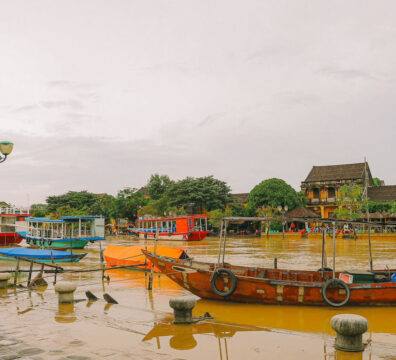
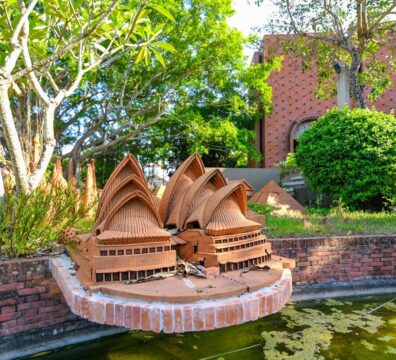



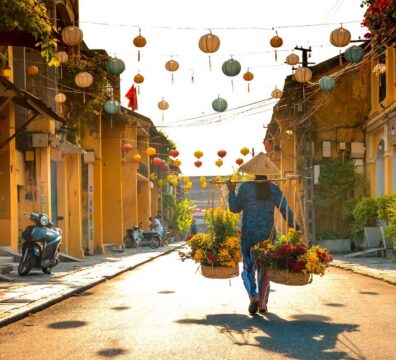


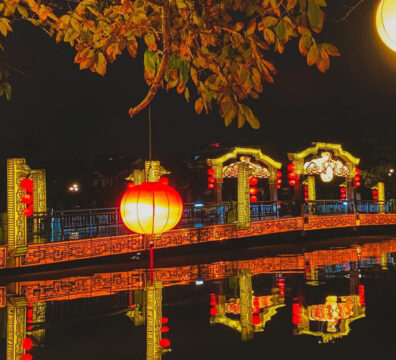
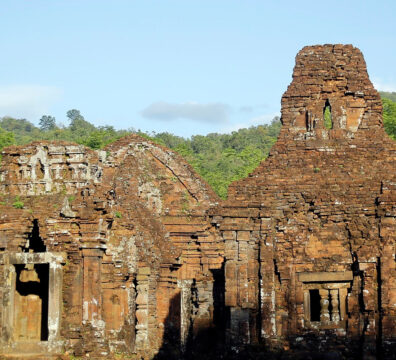


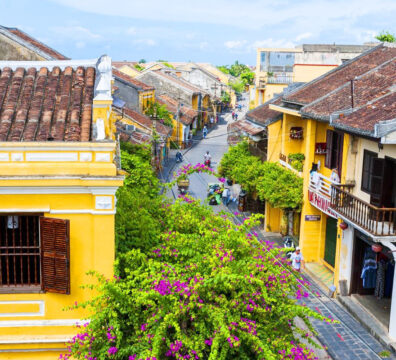



















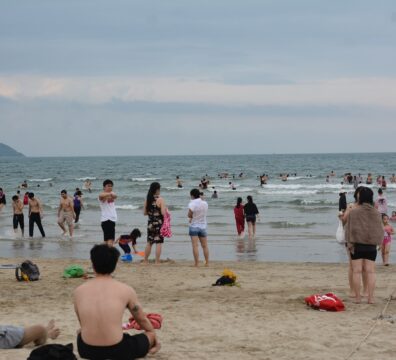

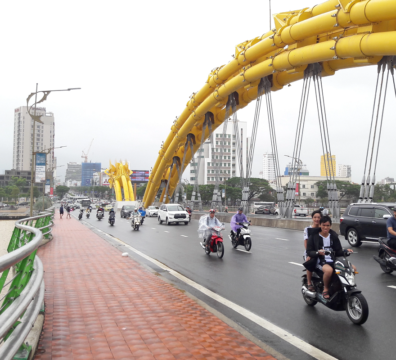









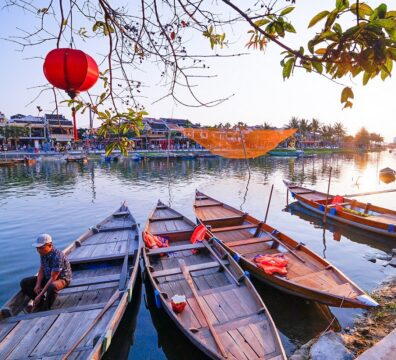


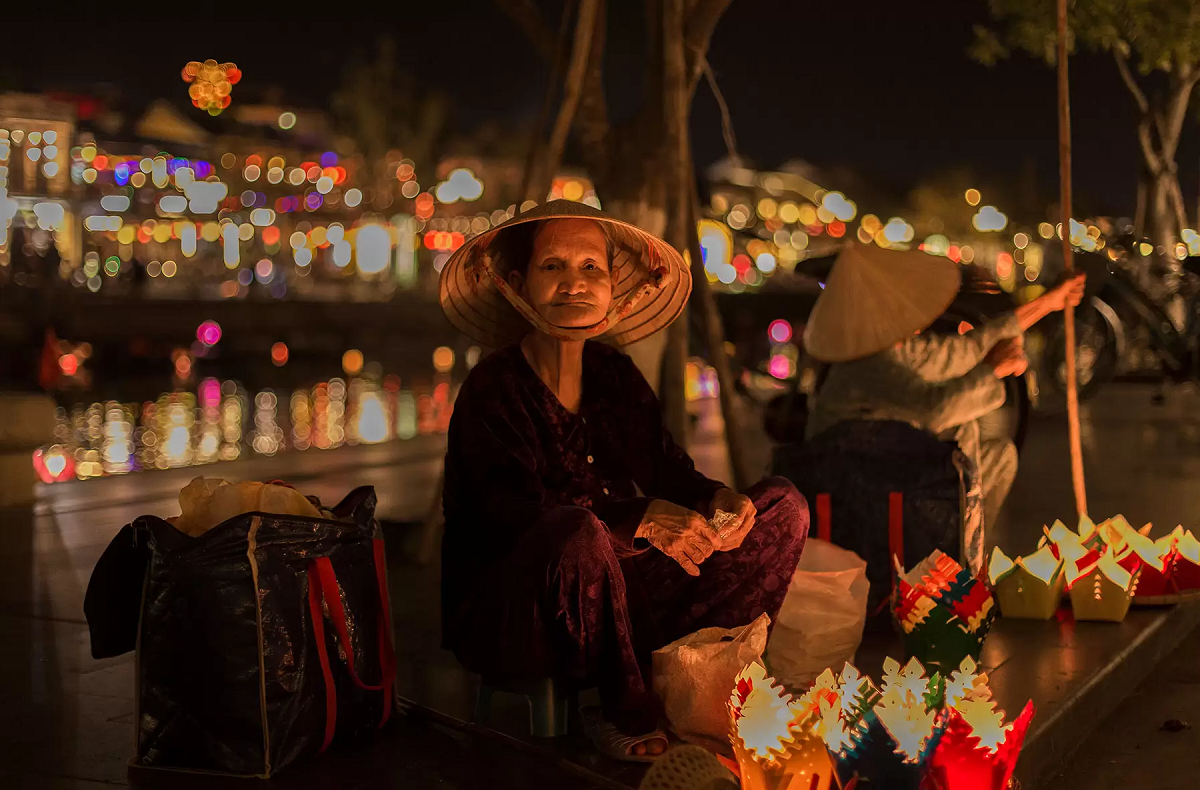








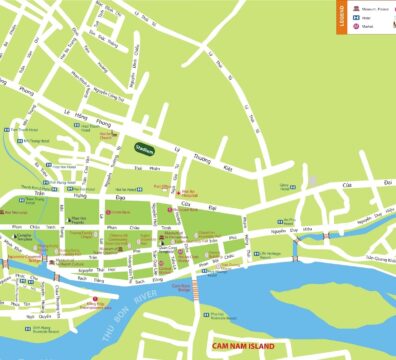

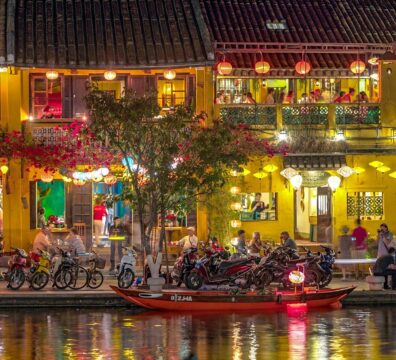
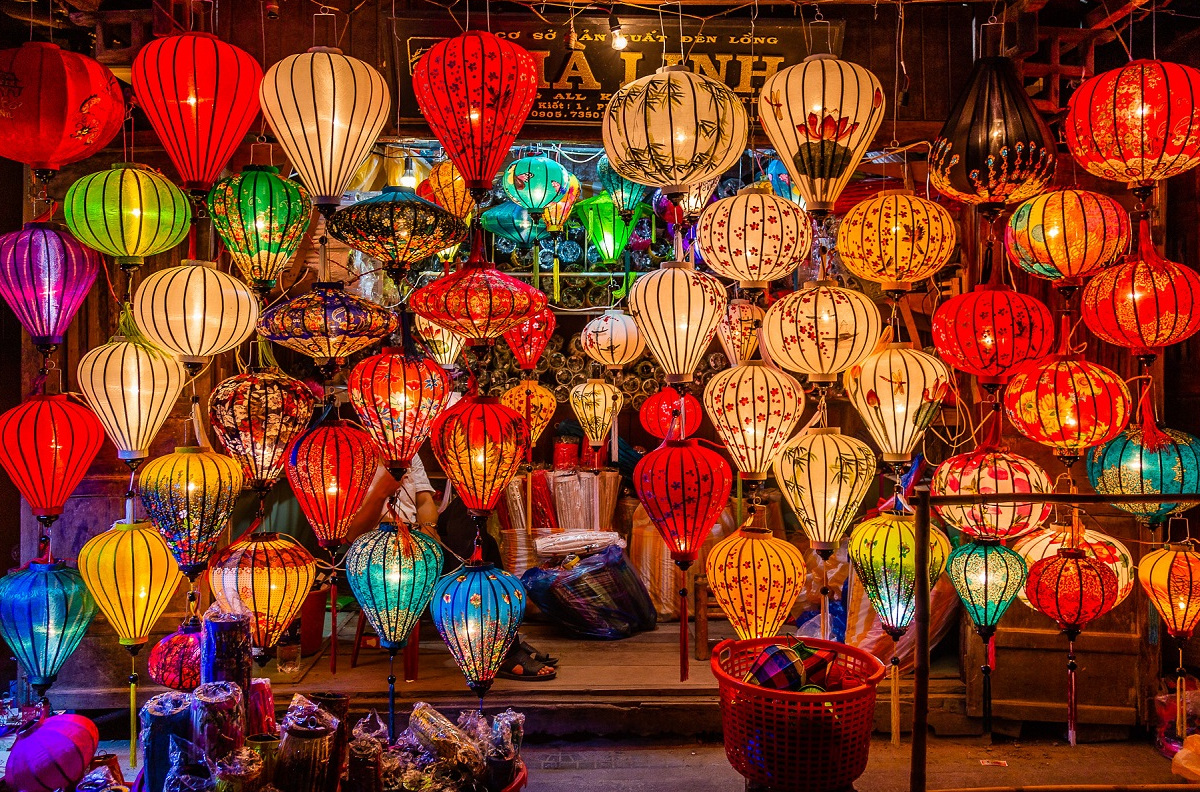




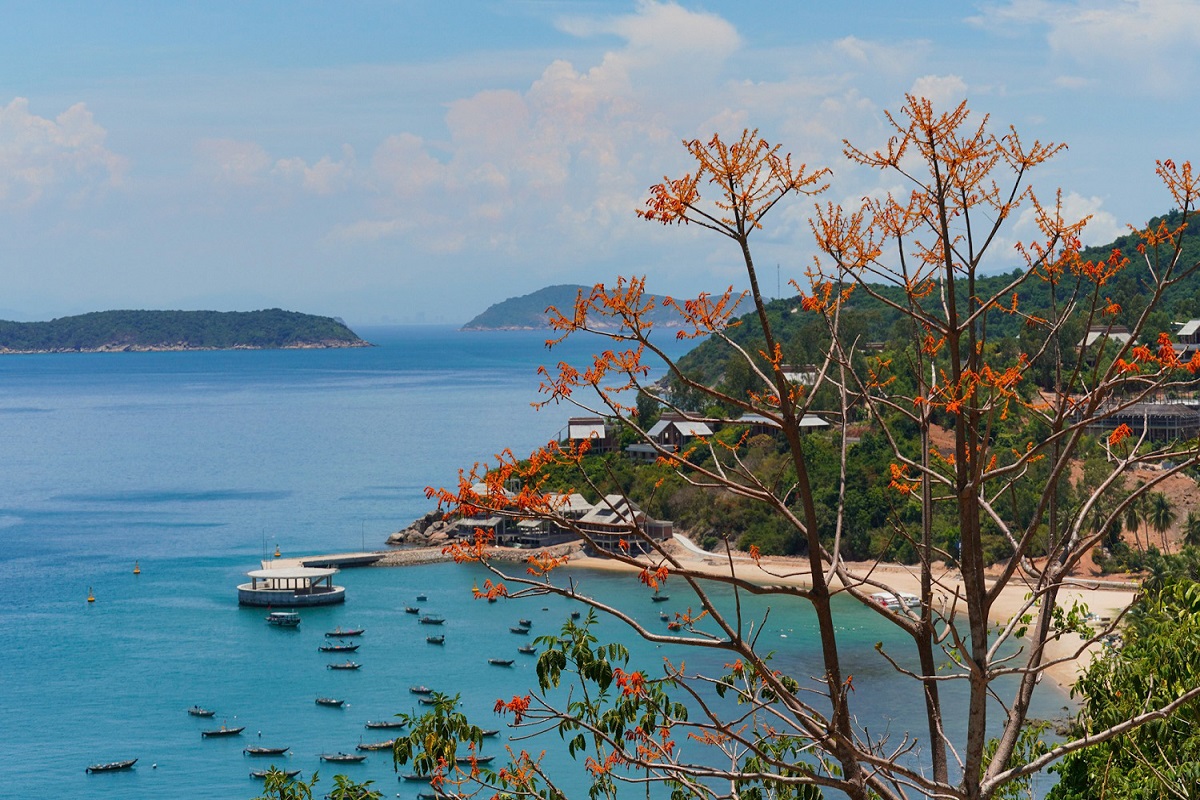








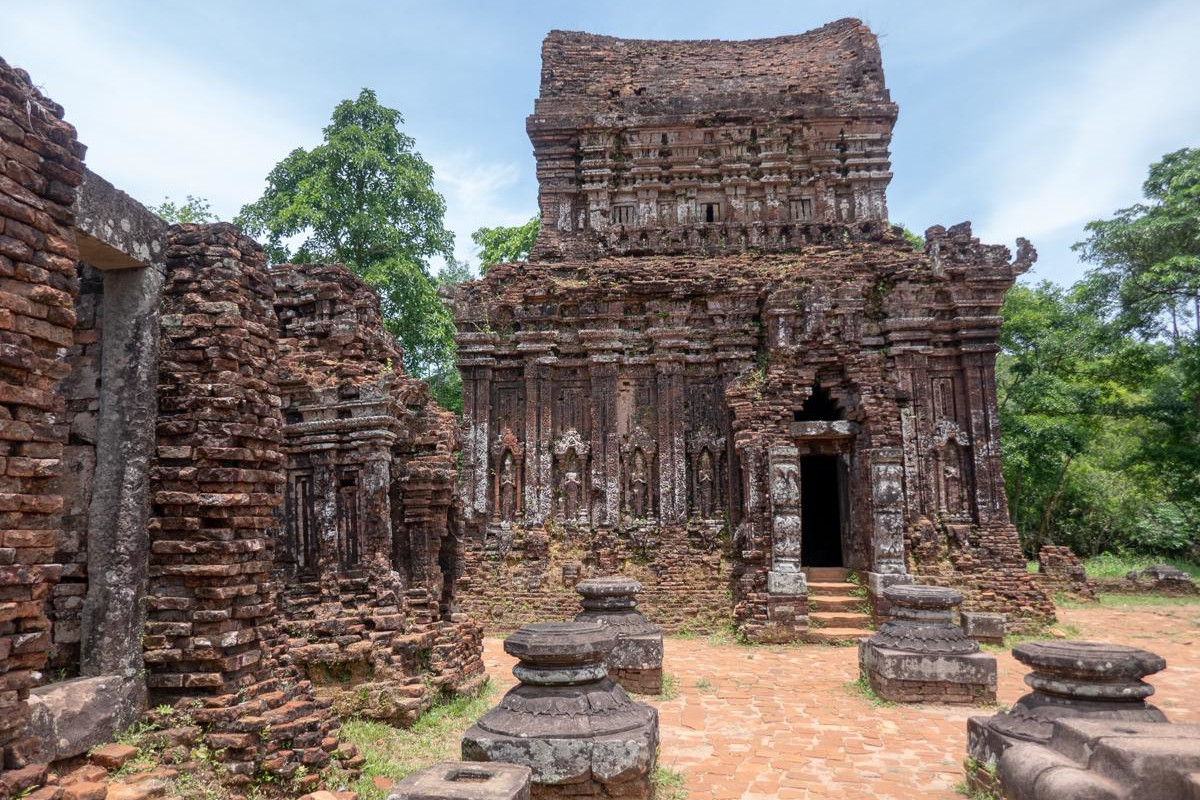

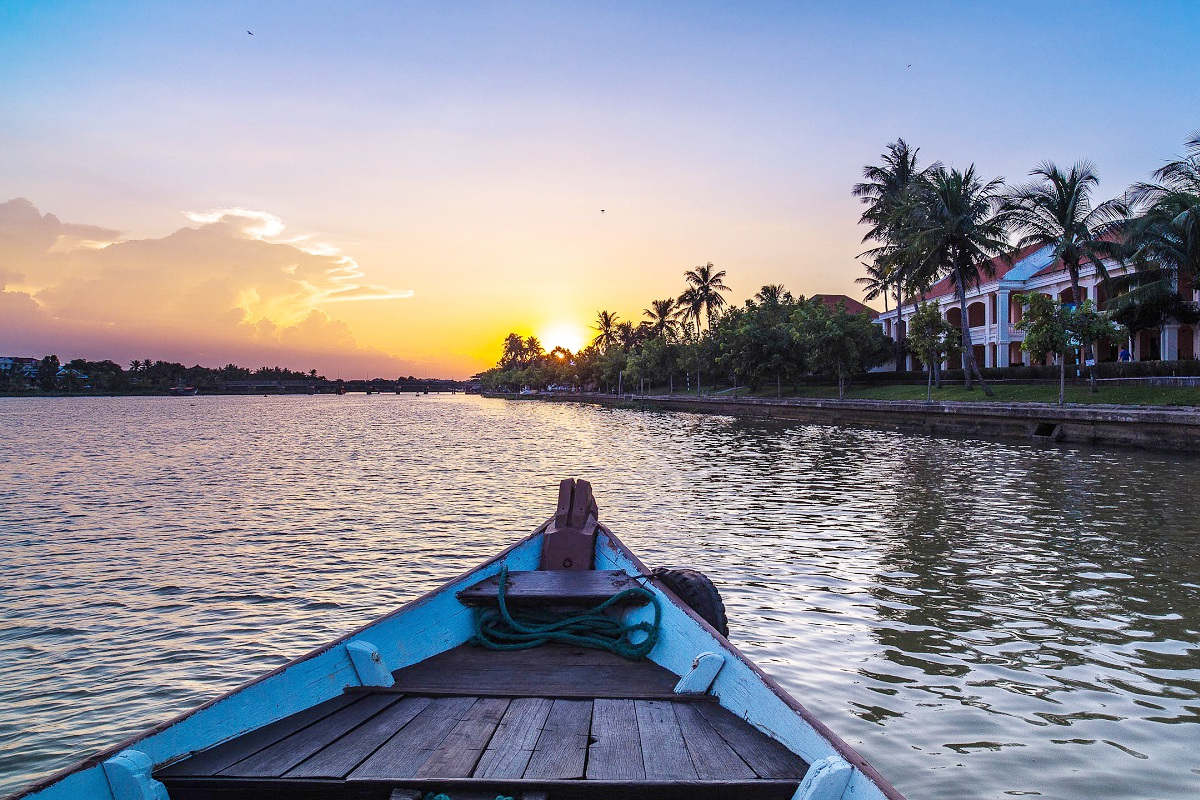





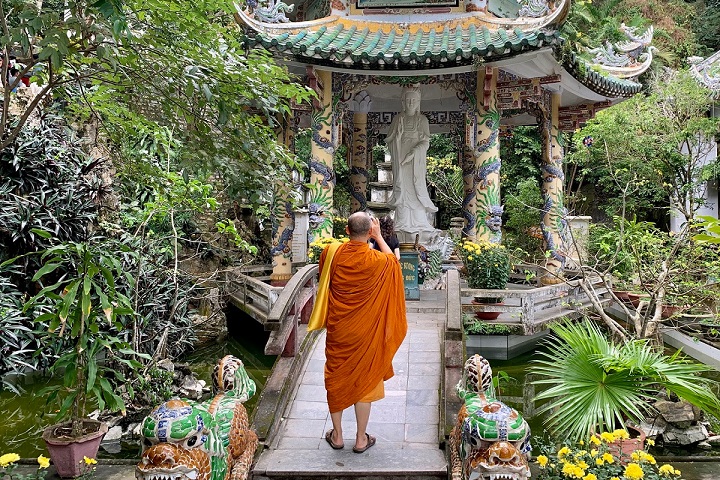


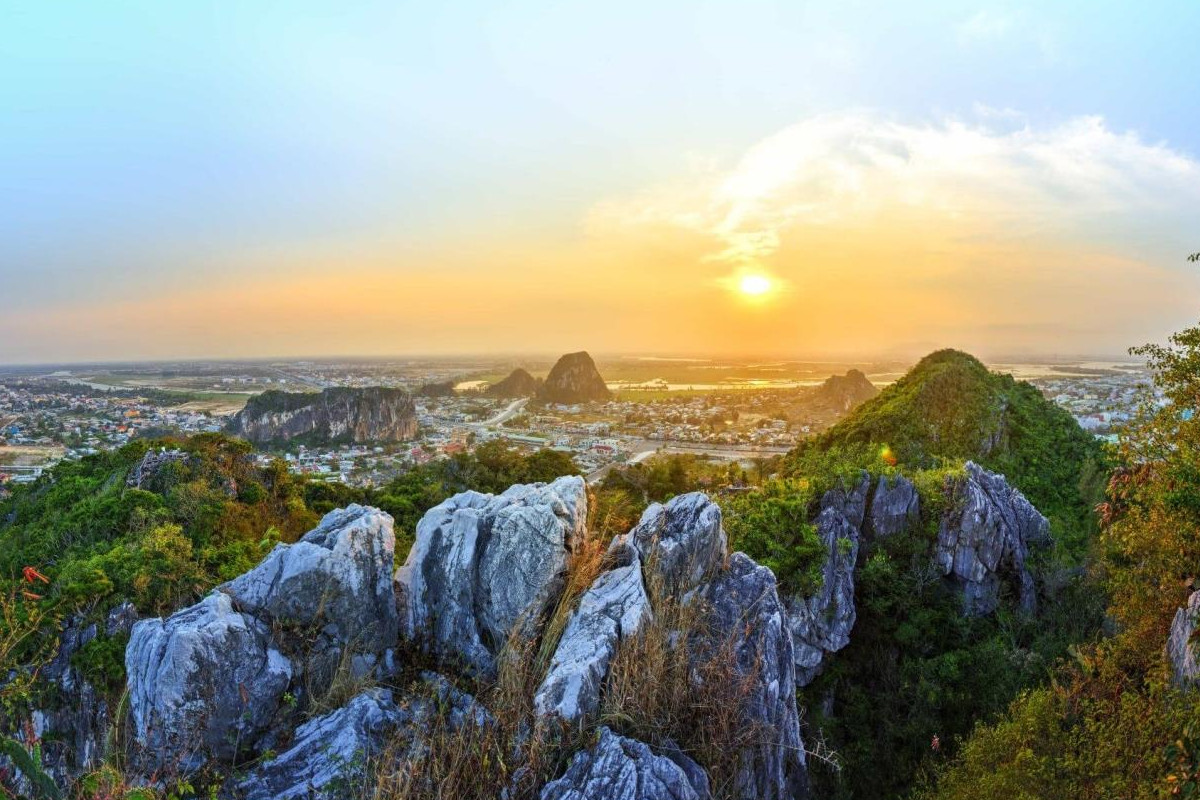
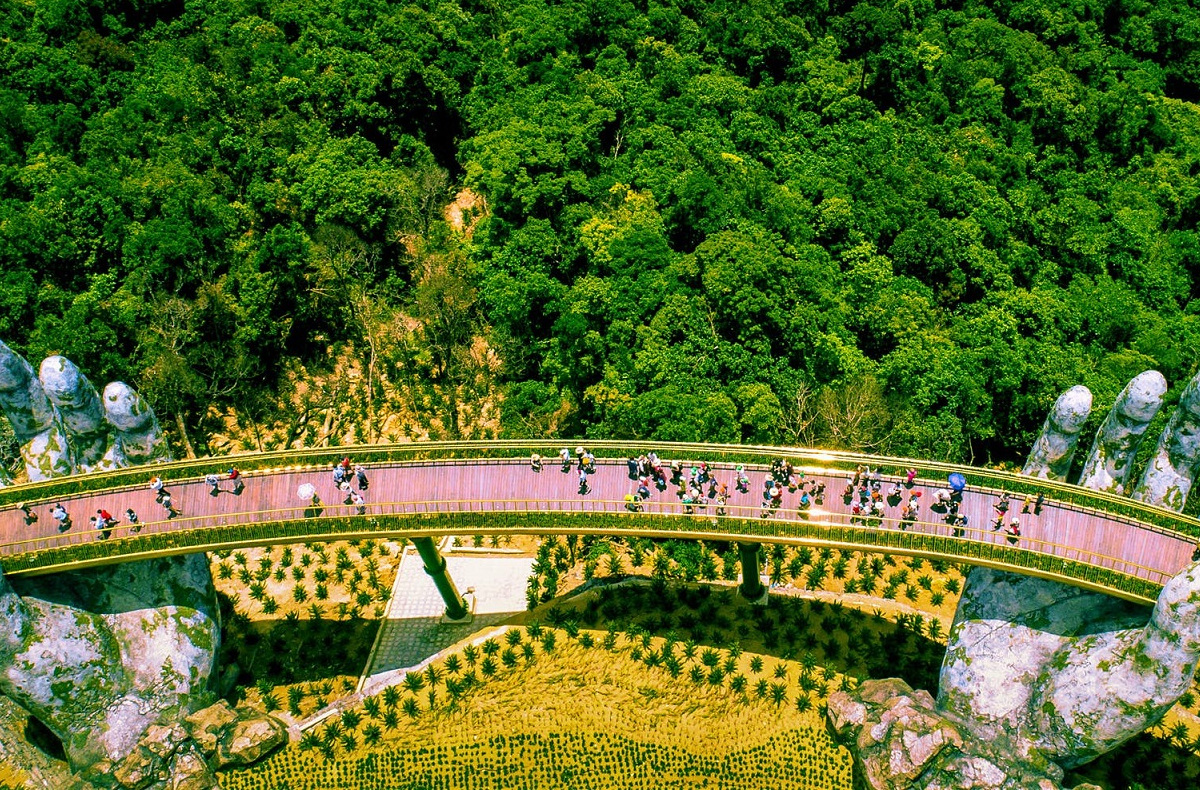














Leave a Reply